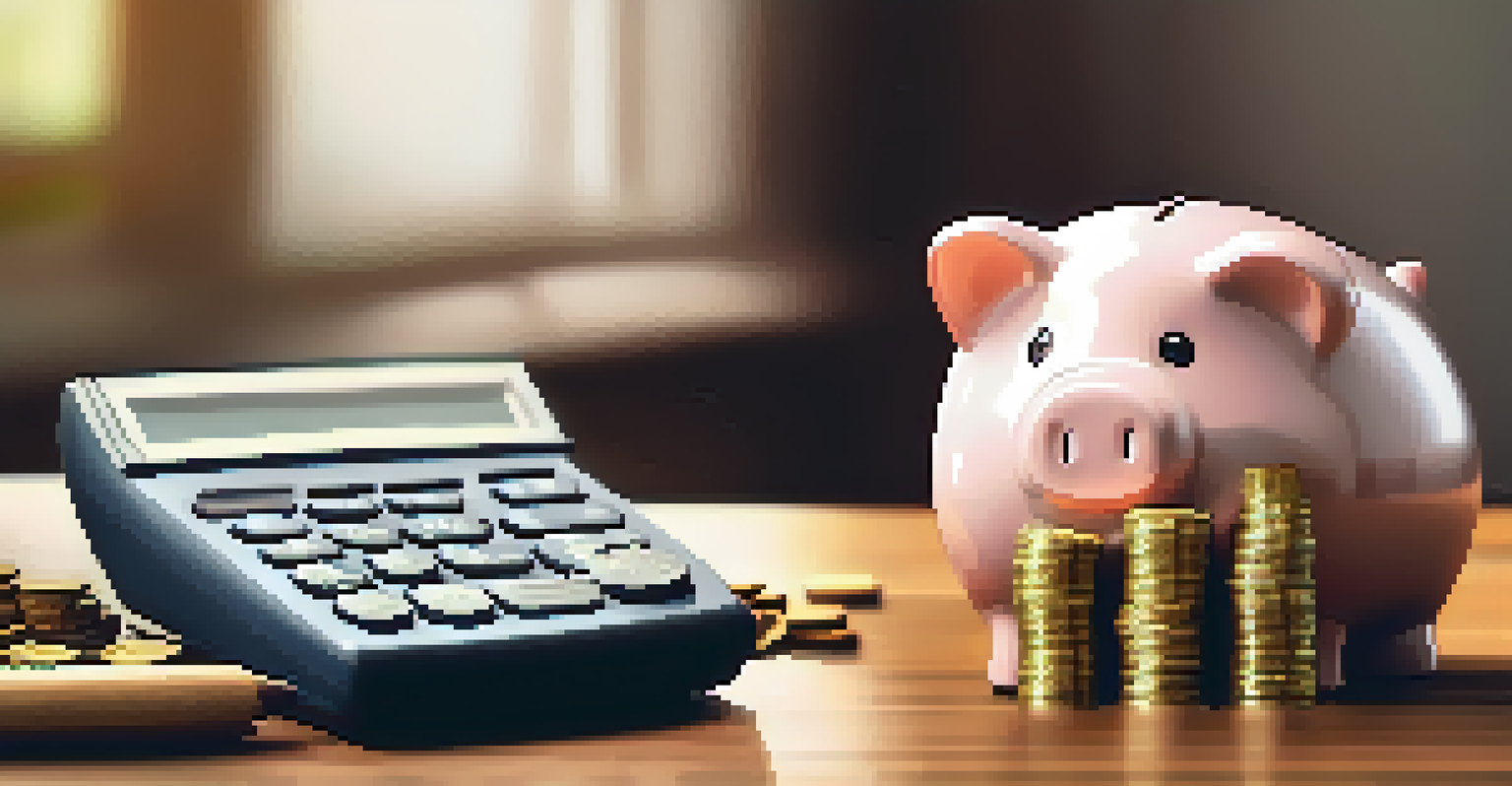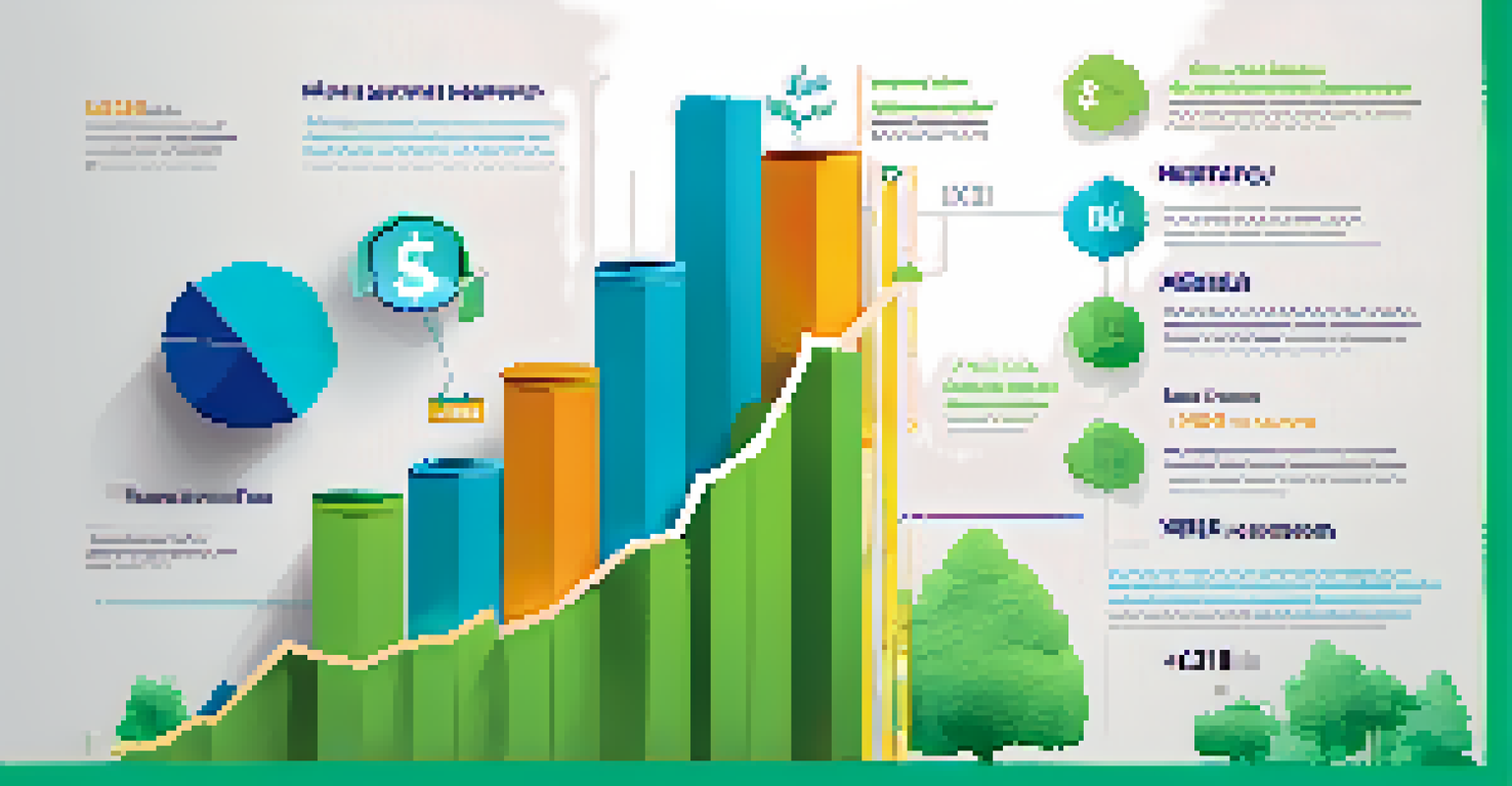The Importance of Emergency Funds in Retirement Planning

Understanding Emergency Funds and Their Purpose
Emergency funds serve as a financial safety net, providing peace of mind when unexpected costs arise. These funds are typically set aside in a separate savings account, easily accessible for unforeseen expenses. Having this cushion is especially vital as you approach retirement, where financial stability becomes paramount.
It's not how much money you make, but how much money you keep, and how hard it works for you.
Imagine facing a surprise medical bill or home repair during retirement; an emergency fund can help you navigate these situations without derailing your budget. It’s like having a life raft on a boat—you may never need it, but it's incredibly reassuring to know it's there. By securing your emergency funds, you can enjoy retirement without the constant worry of financial setbacks.
Ultimately, emergency funds allow you to maintain your lifestyle and protect your investments during turbulent times. They help ensure that you won’t need to dip into your retirement savings, giving you the freedom to enjoy your hard-earned years without financial stress.
How Much Should You Save for an Emergency Fund?
Determining the right amount for your emergency fund can feel daunting, but a common rule of thumb is to save three to six months' worth of living expenses. This range provides a solid foundation to cover essential costs like housing, food, and healthcare in case of an emergency. However, individual circumstances can vary, so it’s important to tailor this amount to your specific needs.

For example, if you're living in a high-cost area or have health concerns, you might want to lean toward the higher end of that range. Alternatively, if your expenses are lower, three months might suffice. Think of it like packing for a trip—you want to bring enough supplies to handle unexpected situations without overloading your suitcase.
In retirement, where fixed incomes are common, ensuring you have adequate funds saved can significantly alleviate stress. Establishing this financial buffer allows you to face uncertainties head-on, ensuring your retirement remains enjoyable and secure.
The Impact of Inflation on Emergency Funds
Inflation can quietly erode the purchasing power of your savings over time, making it essential to consider when planning your emergency fund. If your emergency savings aren’t keeping pace with inflation, you might find yourself in a precarious position when you actually need those funds. This makes it crucial to regularly reassess your savings goals based on current economic conditions.
A budget is telling your money where to go instead of wondering where it went.
For instance, if prices rise significantly, the amount you saved years ago may not cover the same expenses today. It's akin to having a bucket with a small hole—it looks full, but it’s gradually leaking. Keeping your emergency fund in a high-yield savings account can help combat some of that inflationary pressure, ensuring your savings grow at a rate that outpaces rising costs.
By being proactive about these changes, you can help protect your financial security in retirement. Continually evaluating your emergency fund allows you to adapt and make informed decisions that keep your retirement plans on track.
Emergency Funds vs. Retirement Accounts: A Comparison
While both emergency funds and retirement accounts are essential components of financial planning, they serve different purposes. Emergency funds provide immediate access to cash for unexpected expenses, while retirement accounts are designed for long-term growth and may come with penalties for early withdrawals. Understanding this distinction helps you allocate your resources wisely.
Think of your emergency fund as a safety net, while your retirement account functions like a garden, growing and maturing over time. You wouldn’t want to dig up your garden every time you need a snack; similarly, you don’t want to touch your retirement savings for unexpected costs. Keeping these funds separate ensures that each serves its intended purpose without compromising your overall financial health.
In retirement planning, it’s crucial to strike a balance between maintaining a robust emergency fund and maximizing contributions to your retirement accounts. By doing so, you can enjoy the best of both worlds: immediate security and long-term growth.
Common Misconceptions About Emergency Funds
One common misconception is that an emergency fund is only necessary for those still in the workforce. In reality, retirement can often bring its own set of unexpected expenses, making an emergency fund just as critical for retirees. The idea that you can rely solely on retirement savings without a safety net can lead to financial strain during tough times.
Another myth is that emergency funds should only cover medical emergencies. However, these funds should be versatile enough to address various unforeseen expenses, from home repairs to vehicle issues. It’s essential to envision your life in retirement and consider all potential emergencies that could arise.
By dispelling these myths, individuals can better appreciate the importance of emergency funds. This understanding empowers retirees to take charge of their financial future and maintain a sense of security throughout their golden years.
Tips for Building Your Emergency Fund
Building an emergency fund doesn’t have to be an overwhelming task. Start by setting a specific savings goal that aligns with your financial situation and then break it down into manageable monthly contributions. Even small, consistent deposits can add up over time, allowing you to gradually reach your target without feeling stressed.
Consider automating your savings to make the process seamless. By setting up automatic transfers from your checking account to your emergency fund, you can ensure that saving becomes a regular part of your financial routine. Think of it like watering a plant—you may not see immediate growth, but with consistent care, it flourishes.
Lastly, celebrate milestones along the way! Acknowledging your progress not only keeps you motivated but also reinforces the habit of saving. As you see your emergency fund grow, you'll gain confidence in your ability to handle whatever life throws your way.
When to Reassess Your Emergency Fund Needs
Your financial situation and needs can evolve over time, making it crucial to periodically reassess your emergency fund. Major life changes, such as moving, retirement, or changes in health, can significantly impact your expenses. Regularly reviewing your fund allows you to adjust your savings goal accordingly and ensure you’re adequately prepared for future uncertainties.
For example, if you’ve recently retired and your income has changed, it might be wise to reevaluate the amount you have saved. Just like adjusting your budget based on your current lifestyle, keeping your emergency fund aligned with your present situation is equally important. This ongoing evaluation can help you maintain financial stability in retirement.

In essence, staying proactive about your emergency fund ensures that you can adapt to life's changes without compromising your retirement security. By making reassessment a routine part of your financial planning, you’ll be more equipped to handle whatever challenges arise.
Conclusion: Secure Your Future with an Emergency Fund
In conclusion, an emergency fund is a vital component of effective retirement planning. It provides a crucial safety net, allowing you to navigate unexpected expenses while preserving your long-term savings. By understanding its importance, setting specific savings goals, and regularly reassessing your needs, you can build a financial cushion that supports your retirement lifestyle.
Think of your emergency fund as a shield against the uncertainties of life. It offers protection and peace of mind, enabling you to enjoy your retirement years without the stress of financial burdens. The comfort of knowing you have resources readily available can significantly enhance your overall quality of life.
Ultimately, taking the time to create and maintain an emergency fund can lead to a more secure and satisfying retirement. So, start today—your future self will thank you for the thoughtful planning and preparation!